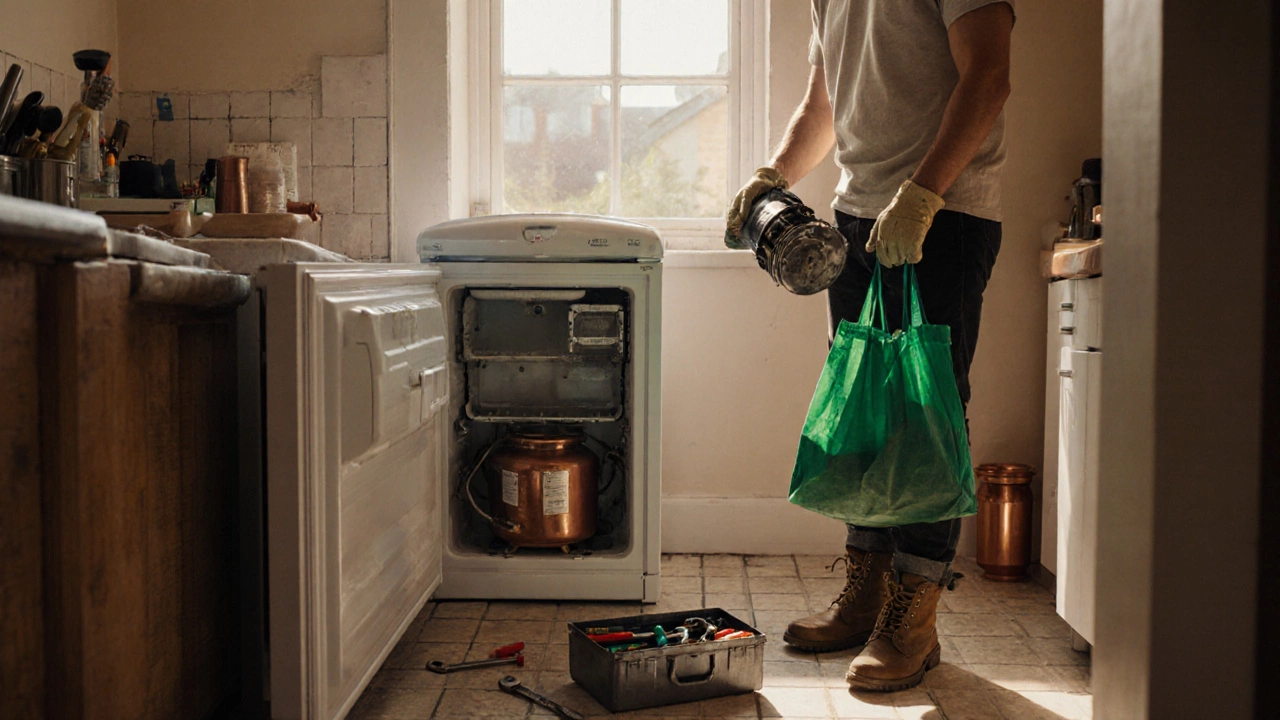Find out if swapping out a freezer compressor makes financial sense. Compare costs, weigh risks, and learn a step‑by‑step DIY guide.
DIY Freezer Repair: Fast Fixes Every Nuneaton Homeowner Can Do
If your freezer has stopped keeping food frozen, you don’t have to panic or immediately dial a repair service. A lot of the usual culprits are simple, inexpensive, and can be solved with a few tools you already have. This guide walks you through the most common problems, shows you how to diagnose them, and gives clear, step‑by‑step instructions to get your freezer back on track.
Common Freezer Problems and How to Spot Them
First, figure out what’s wrong. Most freezer issues fall into three buckets: cooling loss, frost build‑up, and strange noises.
- Not cooling enough: If the temperature stays above -18 °C (0 °F) or ice cream softens, the compressor or the condenser coils may be dirty.
- Ice build‑up: A thick layer of frost inside the freezer means the defrost timer or heater isn’t working.
- Buzzing or clicking: This often points to a faulty start‑relay or a failing thermostat.
Open the freezer, check the temperature dial, and listen for the compressor humming every few minutes. Those clues tell you where to focus your effort.
Step‑by‑Step DIY Fixes
1. Clean the condenser coils. Unplug the freezer, locate the coils (usually behind a grille at the back or underneath), and brush away dust with a vacuum brush. A clean coil improves airflow and helps the compressor work efficiently.
2. Defrost a frosty freezer. Turn the unit off, remove all food, and let the ice melt. Speed up the process with a bowl of hot water placed inside. Once clear, wipe dry and restart. If frost returns quickly, the defrost timer may need replacement.
3. Test the door seal. Close a dollar bill inside the door so the edge is halfway in the seal. Pull it out; if it slides easily, the gasket is leaking air. Clean it with warm, soapy water, or replace the rubber strip if it’s cracked.
4. Check the thermostat. Locate the thermostat (often a dial near the top). Turn it a few degrees warmer and see if the compressor kicks in. If not, the thermostat could be dead and should be swapped for a new one.
5. Inspect the start‑relay. The start‑relay sits on top of the compressor. When you plug the freezer back in, listen for a click. No click? The relay might be stuck. Tap it gently with a screwdriver; if it starts, replace it to avoid future failures.
Always reconnect power only after you’re sure the area is dry and all components are securely placed.
If you’ve tried these steps and the freezer still won’t freeze, it’s time to call a pro. Issues like a refrigerant leak or a failed compressor require specialist tools and must be handled by a certified technician. Nuneaton Appliance Repair Experts can diagnose those advanced problems quickly and get your freezer running again.
Keeping a freezer in good shape is mostly about regular maintenance: clean coils every six months, wipe the door seal weekly, and defrost when frost gets thicker than a quarter‑inch. Those simple habits save money and keep your food safe.

